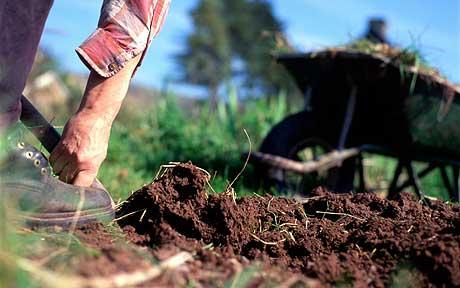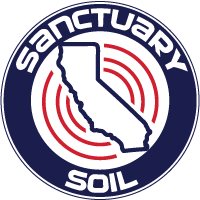Keeping Soil Healthy

A healthy ecosystem is the key to healthy soil, and healthy soil is the foundation of every garden or lawn. An important concept to remember about keeping soil healthy is that we need to put back what we take out of our soil. This natural ecosystem includes the roots, stems and leaves of the grass in addition to thatch, soil and pests. It also includes soil microorganisms, non-pest invertebrates, such as earthworms, spiders, beetles, oribatid mites, nematodes, annelids, ants and other arthropods that work the soil and are natural pest predators.
If this ecosystem is left alone, it will maintain relative stability. Plant materials and thatch will be broken down and decomposed by microorganisms and earthworms. The pests will be held in check by predators, parasites, and natural plant resistance. In fact, excessive thatch build up and disease and insect damage rarely occur in lawn areas or gardens that maintain a stable ecosystem.
Studies show that even one application of a fungicide or insecticide at the recommended rate will reduce the earthworm population in the soil. In fact, many common insecticides and fungicides sold over the counter can kill 60 to 90 per cent of earthworms present. In addition, other beneficial insects and microorganisms also are adversely affected by pesticides.
Notice the beneficial microorganisms in the soil. They are diverse organisms all doing their job making healthy soil/humus. Our job is to keep the organisms supplied with raw food and to keep them alive and well in our soil. The underlying principle is that good soil contains copious amounts of organic matter to feed the soil organisms which, in turn, excrete the nutrients that plants need, in a form that plant roots can take up.
All these organisms eat organic matter or consume other organisms. As they digest this material, nutrients are converted from one form to another (in the same way that the food we eat is changed by our digestive enzymes). The organisms retain what they need for their own growth and reproduction; what they excrete contains nutrients now in a form that plant roots can take up.
Your compost, is the most perfect support for keeping your soil community/beneficial microorganisms alive and healthy.
Besides opening up and softening the soil, organic matter is essential to form a sponge in the soil which will trap water from rain or irrigation and prevent it from quickly percolating down out of reach. At the same time it retains any soluble food materials which are being carried down by the water.
Rather than raking and bagging your lawn clippings, incorporate them into your compost pile. Leave the leaves, twigs, etc. from a tree to mulch the area under the tree. This way, the nutrients that the tree took from the soil are returned and this keeps the soil nutrients balanced.
With vegetable or fruit gardens, you can use plants at the end of the season to enrich your soil. When the tomato vines die at the end of the year, the stem is broken from the roots and the roots are left in the soil to feed the beneficial microorganisms that which was taken from the soil to grow the tomato. The dried upper plant parts can be broken up and used for mulch on this bed along with other mulch. Just make sure to remove and dispose of materials that show signs of disease or pests. You can also incorporate these materials into your compost pile.
Some people grow what is called a cover crop on a bed when it is not being used to grow food. Cover crops can put back many nutrients which could be depleted from “heavy eater” crops.
THINGS TO AVOID
Chemical fertilizers negatively impact the soil food web by killing off entire portions of it. Note what table salt does to a slug. Fertilizers are salts; they suck the water out of the bacteria, fungi, protozoa and nematodes in the soil. Since these microbes are at the very foundation of the soil food web nutrient system, you have to keep adding fertilizer once you start using it regularly. The microorganisms are missing and not there to do their job of feeding the plants.
If the salt-based chemical fertilizers don’t kill the beneficial microorganisms in the soil, then rototilling will. This process breaks up fungal hyphae, kills worms, and rips and crushes arthropods. It destroys soil structure/soil sponge and eventually saps soil of necessary air. Air pollution, pesticides, fungicides and herbicides also kill off important members of the beneficial microorganism/food web community or cause them to find a better place to live. The soil stops functioning.
Once the microorganisms die, the other members of the soil food web will leave to. For example, earthworms will leave when they lack food and are irritated by the synthetic nitrates in soluble nitrogen fertilizers. All of this impacts the nutrition, as well as the structure of the soil. Watering becomes a problem because the sponge has broken down and pests and diseases are able to establish themselves. Gardening like this is a lot of work and you are not gaining the nutrition you were hoping to get.
Research examining sustained pesticide use over time shows increases in the number of pests because beneficial predators and competing microorganisms are killed. Pest resistance to the chemicals also has developed. While these pesticides can be useful in severe disease or insect outbreaks, they are best used as needed and as spot applications. Even then, underlying stresses such as compaction need to be addressed to achieve real, long-term pest control.

